SLC-1L-08: Senior Photo
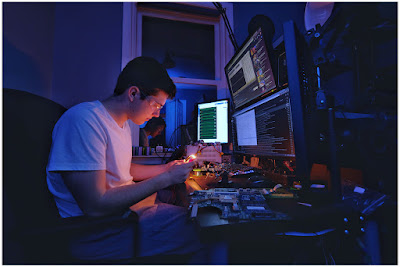
This week, Ben, my youngest, graduates from high school. Which for any photographer dad also means senior photos. We obliged mom with a standard version, shot in the back yard with a soft box and underexposed foliage as a backdrop.
But we also wanted to do something a little cooler, of the real Ben: at his desk, late at night, appropriately doing some kind of science/engineering.
So this is what we came up with. Lit simply, the fill light was an on-camera flash. The key light was... a pencil.
The Assistant
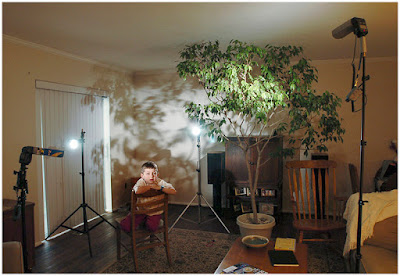
Long time readers will recognize Ben from way back when as a regular stand-in for lighting tests, and as an occasional final subject. Above he is seen at age five, sitting in for a (frankly, too complex) setup of some kind.
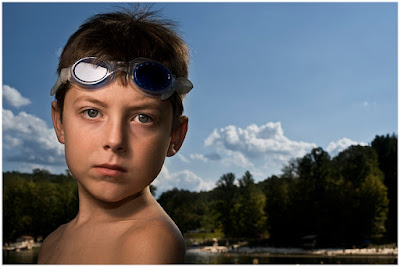
Here, the lighting is a bit more basic, done at the lake at age seven for an ad for a hand-held mini soft box.
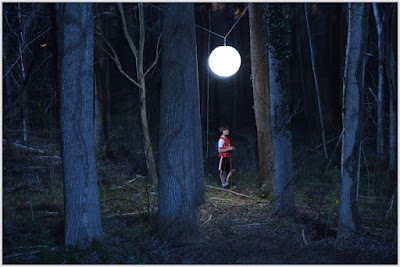
And above, age 11, standing in for the lighting test that would yield this portrait:
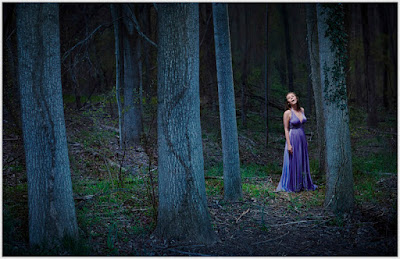
He's been a reliable and curious stand-in for more pictures than I can remember.
He's a little older and taller now. At eighteen years and six-foot-two, he also has grown into a maker. He builds things, hacks things, breaks things — the whole works. For instance, he recently resurrected the parts from an old, not-very-fast RC car that he had played with as a younger kid.
The result: a FrankenCar that to me looks like a Gordian Knot of wires, tires, motors, Li-Po battery pack and a bunch of 3D printed parts. And it works—rather well.
Suffice to say the new version is a tad faster than the store-bought one: brushless motors, dual-layer suspension and computer/gyroscopic-controlled steering basically turn it into a high-pitched blur:
This is a typical Ben project. Done at 2:00am behind the desk while we sleep, occasionally to be awakened by the whining of a 3D printer, the screech of an angle grinder or the smell of the "magic smoke" escaping from an electronic speed controller or Arduino, rendering it dead.
Science in His Blood, Literally
Ben's tinkering has oft landed him in the emergency room. He's a frequent flyer now, on average having visited there once every two years since birth.
But even in the waiting room: more physics. Hand still bleeding, he calculated that the drone blade that had just sliced him more than a dozen times did so in less than six one-thousandths of a second. Or in photo terms, almost the sync speed of a Canon 5D.
He has been taught the hard lessons of immutable laws of physics by everything from a DIY flying wing to a 2003 Honda Civic Hybrid (RIP). The intro on his college application essay read, paraphrasing: I love physics, but physics doesn't always love me back.
So as far as I was concerned, there was only one place to shoot his real senior photo. The work desk.
First: A Quasi Ring Light Fill
The first step in the photo at top, which you can see bigger here, is to create fill legibility and build a base color environment. I'm going to use an on-camera flash much in the way I would use a ring light here, only better.
I put a CTB gel on the flash to cool down the color. Then I bounced the flash off of the wall directly behind me. This will be better than a ring light. Because while it will still be relatively on-axis, it will also be both a much larger light source and have a longer light-to-subject working distance.
This means that, even while underexposed by a couple stops, it will paint nice specular highlights on the electronics gear and softly reach well into the back of the frame without petering out. For more detail on those concepts, see here and here, respectively.
The CTB gel was to create, and exaggerate, the feel of late night. Underexposing the blue light increased the apparent saturation as well. Since the wall was a neutral gray, the color that came back was about the same as the color that I threw at it.
The window picks up the reflection of the fill light, giving more depth and detail. It keeps the background from going dark.
Next: Burn in the Monitors
Once we get a working flash exposure here (let's call it f/4 at ISO 800) we need to properly expose the monitors. That is is simple as adjusting your shutter speed until they look right.
In this case, it looked good at 1/30th of a second.
Now we have a fill/legibility environment, and detail in the screens. In cinema parlance, these screens would be called "practicals," or lights that are to appear as subject matter in a scene rather than light sources.
But because of their narrow viewing angle, the screens can do the seemingly impossible job of appearing correctly exposed from my hard viewing angle while also being legitimate light sources from Ben's viewing angle.
If this does not make sense, point the screen of your smart phone at your ceiling in a dark room one night and you'll see just how narrow that effective viewing angle really is.
This is also how we got double duty (practical and light source) from a phone for the pizza shop photo.
Now Add the Key Light
The shot looked pretty good with just the monitors lighting his face. But then he said, "You wanna see what a pencil lead looks like when you put five amps through it?"
Why yes I would.
Turns out a pencil lead (okay, graphite) lights up as a filament just like a skinny piece of tungsten does. Maybe even a bit warmer.
And the light from that electrified graphite, emanating from inside the frame, brought the whole thing together: on-camera flash as a fill, pencil lead as a key.
The only other warm light in the scene is the power LED from something (God only knows what) bringing some color contrast into the photo in the middle right. I'll take it.
Off to College
I've long been equal parts amazed and proud to see all of the stuff Ben has been able to pull off, mostly via self-directed education at the University of YouTube. His room/lab is cluttered to the point of being nearly uncrossable. As a dad, I'll admit to being conflicted.
Ben graduates high school this week. This fall, he will be trading his late-night laboratory for a college dorm. It is in that environment that he will find out if he can parlay all that real-world aptitude into a mechanical engineering degree.
Fair warning to the college roommates: be ready for a bit of clutter. Or maybe they'll be cut from the same cloth. Fingers crossed.
We'll be watching from afar, in a house that is statistically now less likely to burn down, and cheering him on.
__________
New to Strobist? Start here | Or jump right to Lighting 101
My new book: The Traveling Photograher's Manifesto
Permalink
<< Home